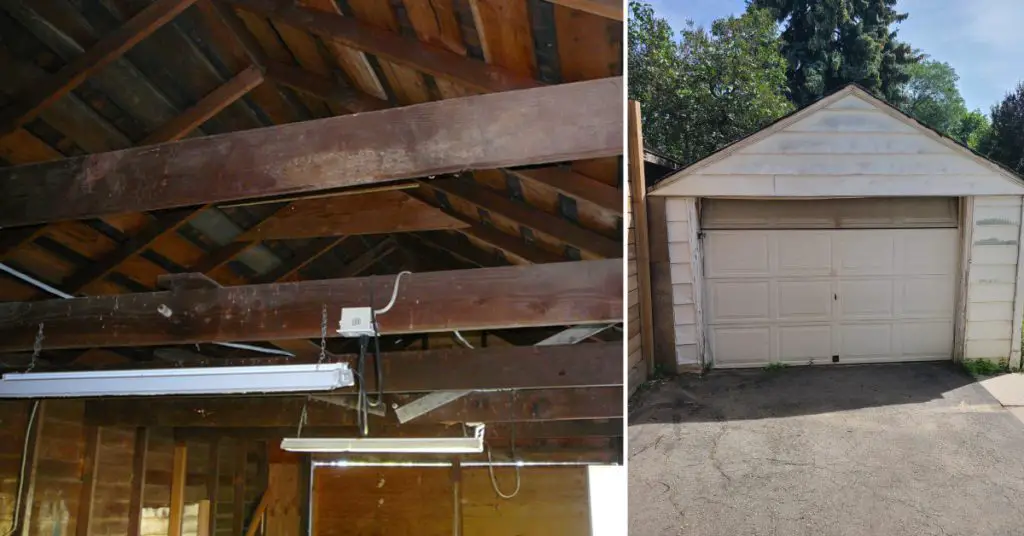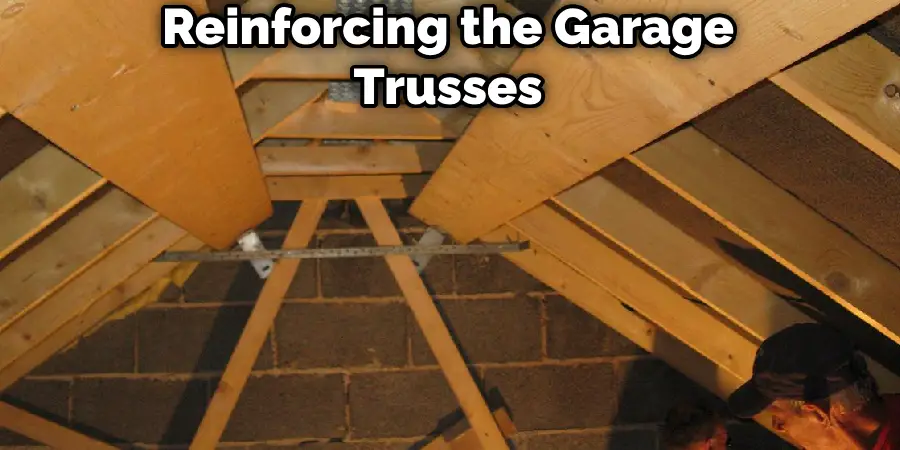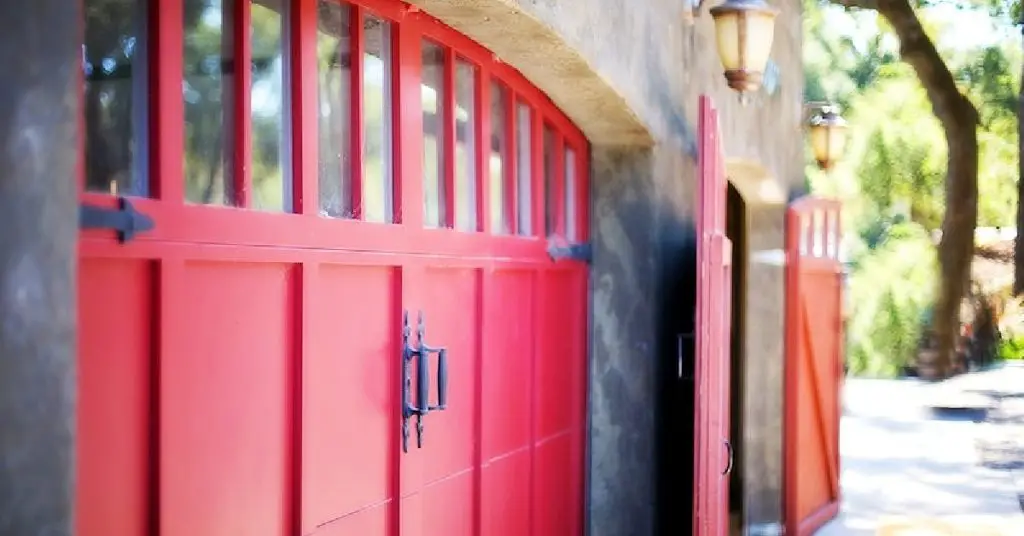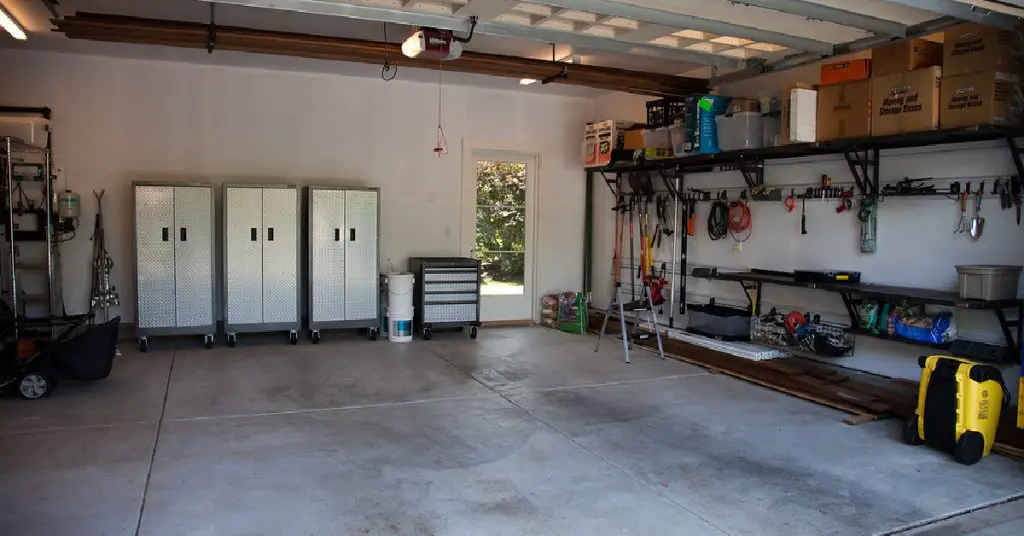Is your old garage showing signs of wear and tear? Worried about its ability to withstand the test of time or support heavy loads? In this blog, we’ll explore practical solutions for how to reinforce an old garage, ensuring its structural integrity and peace of mind. Discover the challenges of aging structures, methods to assess their condition, and effective techniques for strengthening trusses and concrete components.

With insights on monitoring, maintenance, and professional assistance, you’ll know to reinforce your garage and ensure its stability. Let’s give your old garage the strength it deserves for a safer and longer-lasting space.
5 Easy Steps for How to Reinforce an Old Garage
Here are the steps you should follow to reinforce your old garage:
Step 1: Assessing the Existing Garage Structure
Before embarking on the journey of reinforcing an old garage, it’s crucial to assess the current condition of the structure. This assessment will help identify any weaknesses, damages, or areas in need of immediate attention. Begin by visually inspecting the garage, looking for cracks, sagging, or signs of structural instability. Pay close attention to the foundation, walls, roof, and support systems such as trusses or beams.
Additionally, consider the age of the garage, previous repairs, and any known issues. It’s also beneficial to consult with a professional or structural engineer who can provide expert insight and guidance in evaluating the garage’s structural soundness. By thoroughly assessing the existing garage structure, you’ll have a solid foundation for planning and implementing effective reinforcement measures.
Step 2: Reinforcing Garage Trusses
Garage trusses play a vital role in providing structural support to the roof and overall stability of the garage. When reinforcing old garage trusses, it’s important to approach the task with caution and precision. One effective technique involves slowly jacking up the center of each truss and adding diagonal web chords from the isolated ends of the existing web members to the peak of the roof. Care should be taken to secure the web members without causing any splitting in the bottom chord.
Nailing the new web members to the ridge can be a more challenging aspect of the process. It is also recommended to gradually lower the trusses after the repair is complete to prevent sagging. Regular monitoring of the new joints, especially in areas with heavy snowfall, is essential. By reinforcing the garage trusses, you can enhance their load-bearing capacity and ensure the structural integrity of the garage for years to come.

Step 3: Reinforcing Concrete Components
Concrete components in an old garage, such as the foundation, walls, and floor, can benefit from reinforcement to enhance their durability and strength. One approach to reinforcing concrete is adjusting the cement-to-sand ratio and incorporating additives for specific purposes, such as air entrainment, shrinkage reduction, or corrosion inhibition. Following local building codes, steel reinforcement can be introduced by using rebar placed in a grid pattern or steel mesh supported by chairs.
Proper placement and integration of the reinforcement should be ensured before pouring the concrete. For retaining walls, consulting an engineer for plans regarding thickness, reinforcement, drainage, and backfilling is advised. When pouring new concrete over an existing slab or leveling a concrete floor, roughening the surface and maintaining a minimum thickness of 2 inches using suitable materials is crucial.
Additionally, it is recommended to seek expert guidance to ensure the proper techniques and materials are employed for reinforcing concrete components in an old garage.
Step 4: Monitoring and Maintenance
After reinforcing an old garage, it is important to implement a monitoring and maintenance plan to ensure the effectiveness and longevity of the reinforcement measures. Here are some tips to ensure the longevity of the reinforcement:
- Keep a journal and regularly measure the distances from the bottom of each truss or the floor to monitor any changes or signs of structural issues.
- Conduct periodic visual inspections to check for splitting, damage, or other abnormalities in the reinforced components.
- Pay special attention to areas prone to heavy snowfall or extreme weather conditions.
- Promptly address any identified issues or abnormalities to prevent further deterioration.
- Maintain proper drainage systems to prevent water accumulation and damage.
- Inspect for moisture or water leaks and address them promptly.
- Regularly check for signs of decay or pest infestation and take appropriate measures for remediation.
- Perform necessary repairs or reinforcement as needed.
- Consider scheduling professional inspections and maintenance checks at regular intervals.
- Stay proactive in maintaining the reinforced elements to ensure the long-term structural integrity of the old garage.

Step 5: Expert Guidance and Professional Help
When reinforcing an old garage, seeking expert guidance and professional assistance is vital for optimal results and safety. Here’s what you need to know:
- Structural Engineers: Consult with specialized structural engineers to assess your garage’s condition, get expert insights, and receive recommendations aligned with building codes.
- Construction Contractors: Engage experienced contractors skilled in garage reinforcement. They’ll handle complex tasks and ensure proper execution using the right materials.
- Building Inspectors: Involve local inspectors to review plans and inspect the work, ensuring compliance with safety standards.
- Permitting Authorities: Check with local authorities for any necessary permits or regulations related to garage reinforcement.
- Professional Associations: Seek recommendations from professional associations in construction and home improvement.
By involving experts and professionals, you’ll benefit from their knowledge and experience, ensuring the structural integrity and safety of your reinforced old garage.
5 Alternative Solutions and Considerations
While reinforcing an old garage, it’s important to explore alternative solutions and consider various factors. Here are some key points to keep in mind:
- Alternative Reinforcement Methods: Besides the traditional approaches mentioned earlier, consider alternative methods like using steel plates, angle braces, or additional support beams to strengthen critical areas of the garage structure.
- Space Limitations: Evaluate the available space in the garage when selecting reinforcement techniques. For instance, if working with limited overhead clearance, explore options like laminated veneer lumber (LVL) or sistering narrower beams for added strength.
- Weight Distribution: Assess the intended use of the garage and the expected loads it will bear. Distribute the weight evenly and avoid overloading specific areas to prevent excessive stress on the structure.
- Cost Considerations: Balance the cost of reinforcement with the benefits it provides. Compare different options, materials, and professional services to find a solution that fits your budget while ensuring adequate reinforcement.
- Long-Term Maintenance: Plan for regular maintenance and inspection of the reinforced areas to identify and address any signs of wear, deterioration, or structural issues promptly. This proactive approach can extend the lifespan of the reinforcement and the overall garage structure.
By exploring alternative solutions and considering factors such as space limitations, weight distribution, costs, and long-term maintenance, you can make informed decisions to reinforce your old garage effectively.

FAQs About How to Reinforce an Old Garage
What Are Old Garage Walls Made of?
Old garage walls can be made of various materials, including drywall, plywood or OSB, metal panels, pegboard, and wood paneling.
Is It Worth Converting a Garage Into a Room?
Converting a garage into a room is a big decision with factors to consider. It can provide extra living space, but its value-added to the home may vary. The cost of conversion ranges from $5,000 to $25,000 or more, depending on the extent of the work. Local regulations, permits, and parking/storage alternatives should be considered. While it can increase property value, it may limit parking and storage.
Exploring other options like additions or garage expansion may offer different benefits. Ultimately, the decision should be based on individual needs, budget, and the impact on the property.
Can a Room Be Built Over a Garage?
Yes, you can build a room over a garage. It’s a popular home renovation option that adds extra living space. The cost depends on location, size, and features. You can choose between constructing a modular second story or expanding an existing one. Structural changes and foundation strengthening are needed to support the added weight. Consider plumbing, electrical work, insulation, and furnishing the new space.
Consulting professionals like architects and contractors are recommended. Ensure seamless integration with the existing house and comply with fire safety regulations.
Conclusion
Reinforcing an old garage is crucial for its safety and longevity. By assessing the structure, reinforcing trusses and concrete components, and implementing maintenance measures, you can ensure a strong and durable garage. Seek expert guidance and professional help to ensure the best results. Consider alternative solutions based on space limitations and budget. Regular monitoring and maintenance are essential for early detection of issues. By reinforcing your old garage, you’ll have peace of mind, a longer-lasting structure, and a safer space for your needs.


